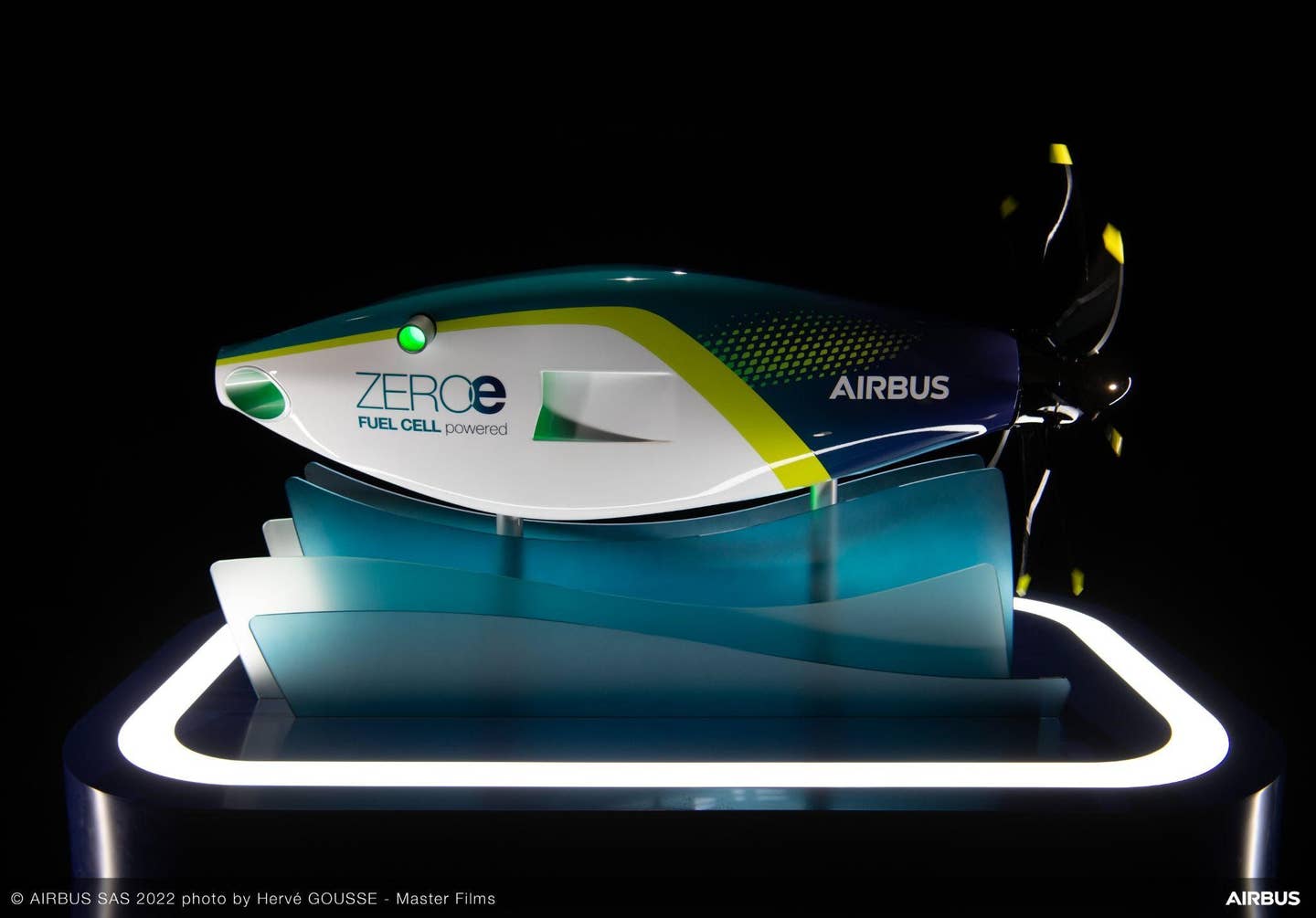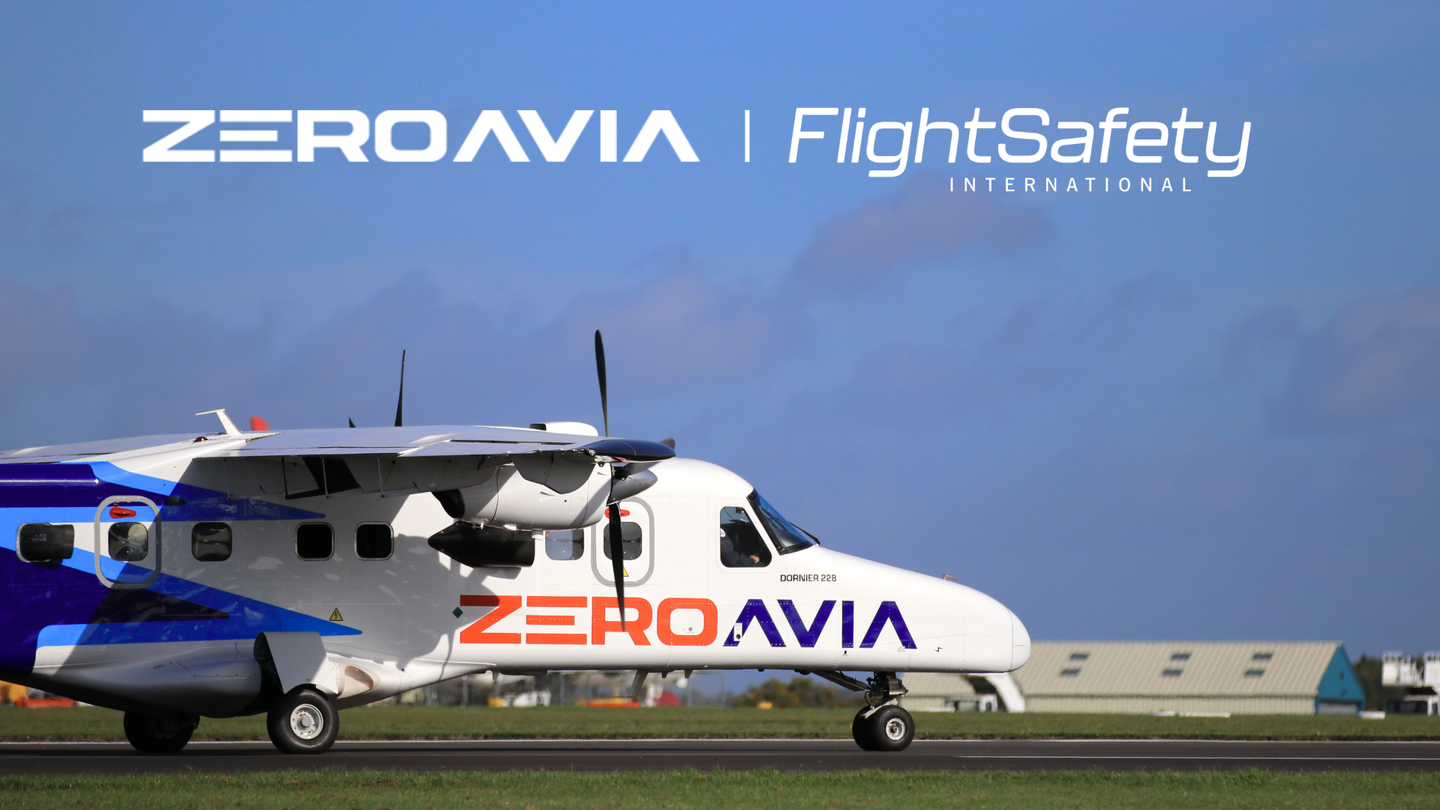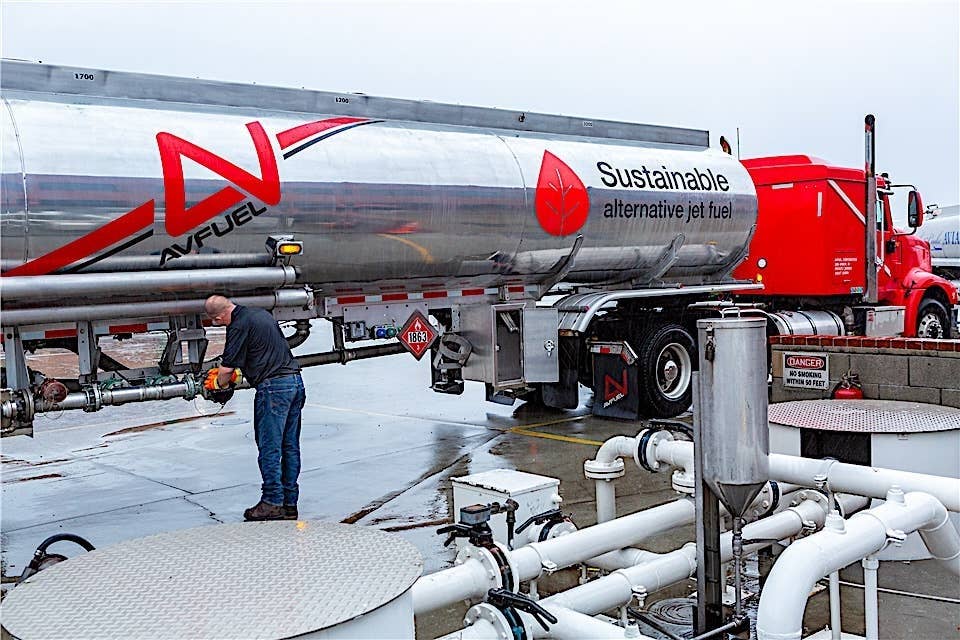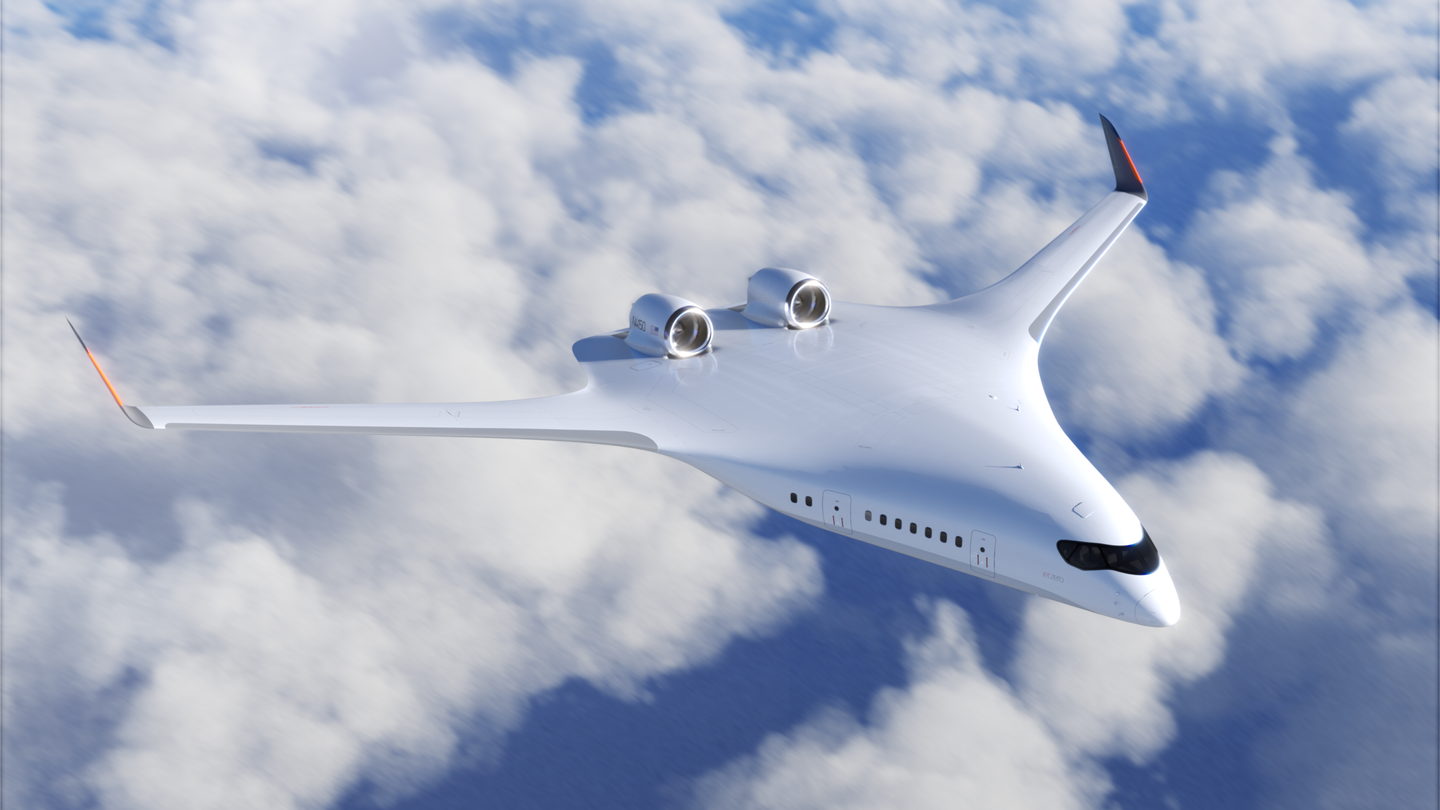Airbus Tests ZEROe ‘Iron Pod’ Hydrogen Power System
The critical test marks a major step toward flying a hydrogen-powered airplane in 2035.

Airbus conducted the first test-run of its ZEROe full hydrogen power system. [Courtesy: Airbus]
Members of the Airbus ZEROe team have successfully test run the hydrogen propulsion system designed for the company’s electric powered concept aircraft.
The power system, called the “iron pod,” includes a hydrogen fuel cell, electric motors, and range of control and cooling equipment. While Airbus had separately tested the fuel cell system at 1.2 megawatts in June and the powertrain at 1 megawatt in October, the recent test marked the first time that the full system operated at 1.2 megawatts.
“It was a huge moment for us because the architecture and design principles of the system are the same as those that we will see in the final design,” said Mathias Andriamisaina, head of testing and demonstration on the ZEROe project. “The complete power channel was run at 1.2 megawatts, the power we aim to test on our A380 demonstrator.”
Airbus said testing the systems together and determining how they interact is how the team will decide how to proceed with the program.
“This process is how we learn what changes need to be made to make the technology flight-worthy,” said Hauke Peer-Lüedders, head of fuel cell propulsion system for ZEROe. “We measure how the propulsion system as a whole works by testing the power needed for several different flight phases, such as takeoff, where we are reaching maximum power levels, and cruising, when we use less power but over a longer period of time.”
The company said it will continue testing the latest version of the iron pod through the rest of this year before moving on to optimizing the system for flight, ground testing, and flight testing on the team’s Airbus A380, which is scheduled for 2026. The long-term goal is to fly a hydrogen-powered aircraft by 2035.

Sign-up for newsletters & special offers!
Get the latest FLYING stories & special offers delivered directly to your inbox






